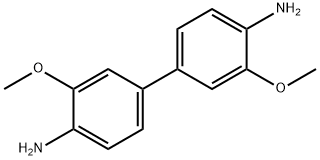A5395512
4-Methylanisole , 99% , 104-93-8
CAS NO.:104-93-8
Empirical Formula: C8H10O
Molecular Weight: 122.16
MDL number: MFCD00008413
EINECS: 203-253-7
| Pack Size | Price | Stock | Quantity |
| 25ML | RMB23.20 | In Stock |
|
| 100ML | RMB52.00 | In Stock |
|
| 500ML | RMB194.40 | In Stock |
|
| 2.5L | RMB849.60 | In Stock |
|
| others | Enquire |
Update time: 2022-07-08
PRODUCT Properties
| Melting point: | -32°C |
| Boiling point: | 174 °C(lit.) |
| Density | 0.969 g/mL at 25 °C(lit.) |
| vapor pressure | 5.25 mm Hg ( 50 °C) |
| refractive index | n |
| FEMA | 2681 | P-METHYLANISOLE |
| Flash point: | 128 °F |
| storage temp. | Sealed in dry,Room Temperature |
| solubility | Chloroform (Soluble), Ethyl Acetate (Slightly) |
| form | Liquid |
| color | Clear colorless to slightly yellow |
| Odor | at 1.00 % in dipropylene glycol. naphthyl cresol ylang powdery nutty |
| Odor Type | naphthyl |
| biological source | synthetic |
| explosive limit | 1.1-8.3%(V) |
| Odor Threshold | 0.0012ppm |
| Water Solubility | slightly soluble |
| λmax | 279nm(MeOH)(lit.) |
| JECFA Number | 1243 |
| BRN | 1237336 |
| Dielectric constant | 4.0300000000000002 |
| Stability: | Stable. Incompatible with strong oxidizing agents. Combustible. |
| LogP | 2.74-2.8 at 25-35℃ |
| CAS DataBase Reference | 104-93-8(CAS DataBase Reference) |
| NIST Chemistry Reference | Benzene, 1-methoxy-4-methyl-(104-93-8) |
| EPA Substance Registry System | p-Methylanisole (104-93-8) |
Description and Uses
p-Methylanisole has a pungent odor suggestive of ylang-ylang. May be prepared by methylation of p-cresol.
4-Methylanisole may be used as an analytical standard for the determination of the analyte in Malus taxa flowers, coffee brews, aqueous matrices, food products, and Ficus semicordata by various chromatography techniques.
Safety
| Symbol(GHS) |    GHS02,GHS07,GHS08 |
| Signal word | Warning |
| Hazard statements | H226-H302-H315-H361-H412 |
| Precautionary statements | P202-P210-P273-P301+P312-P303+P361+P353-P308+P313 |
| Hazard Codes | Xn |
| Risk Statements | 22-38-10-52/53-63 |
| Safety Statements | 36/37-16-61 |
| RIDADR | UN 1993 3/PG 3 |
| WGK Germany | 1 |
| RTECS | BZ8780000 |
| TSCA | Yes |
| HazardClass | 3 |
| PackingGroup | III |
| HS Code | 29093090 |
| Hazardous Substances Data | 104-93-8(Hazardous Substances Data) |
| Toxicity | The acute oral LD50 in rats was reported as 1.92 (1.51-2.45) g/kg (Hart, 1971). The acute dermal LD50 in rabbits was reported as > 5 g/kg (Hart, 1971). |



